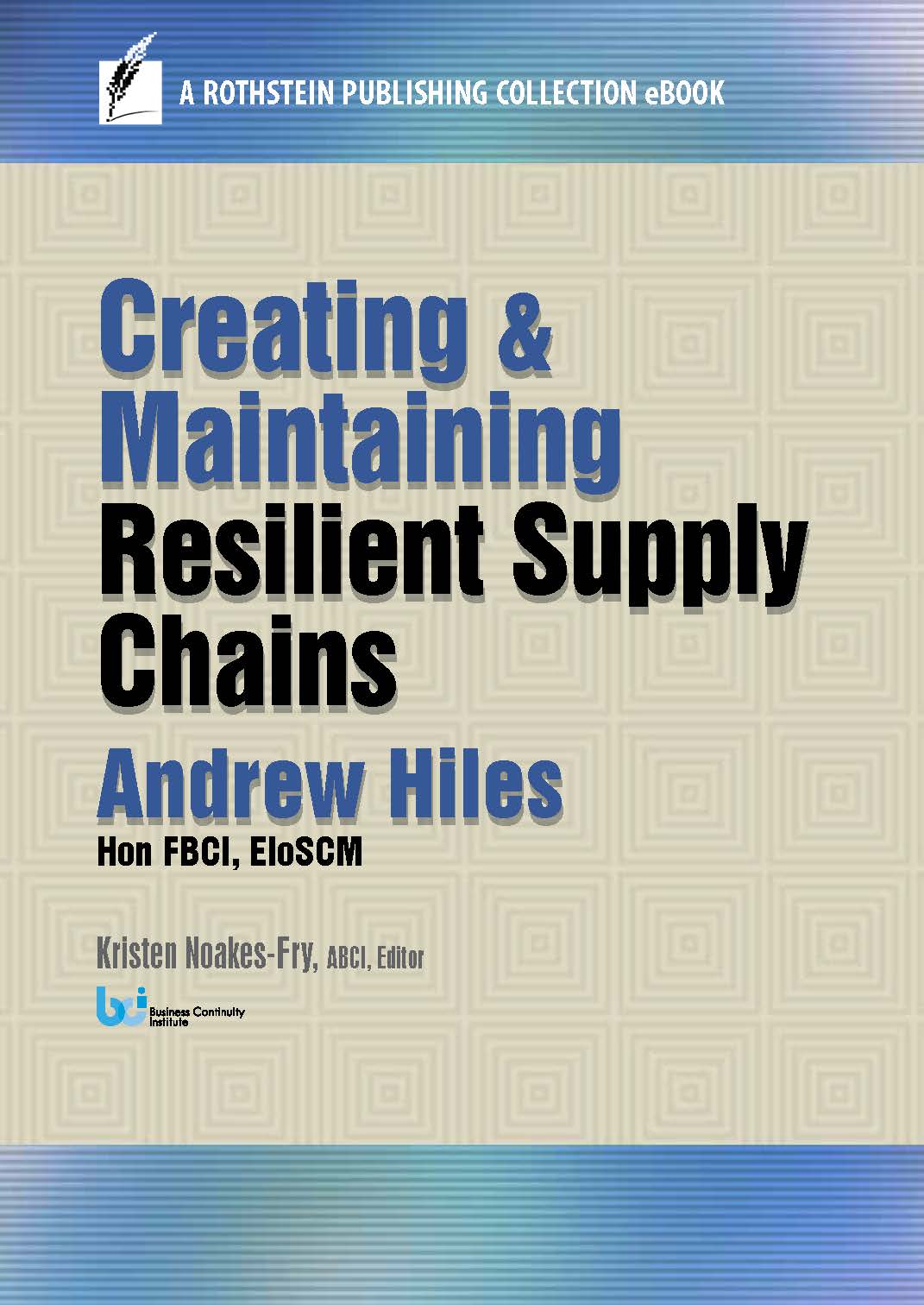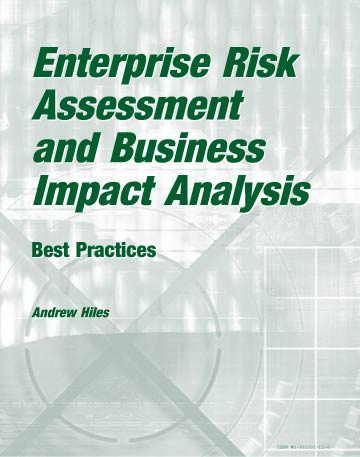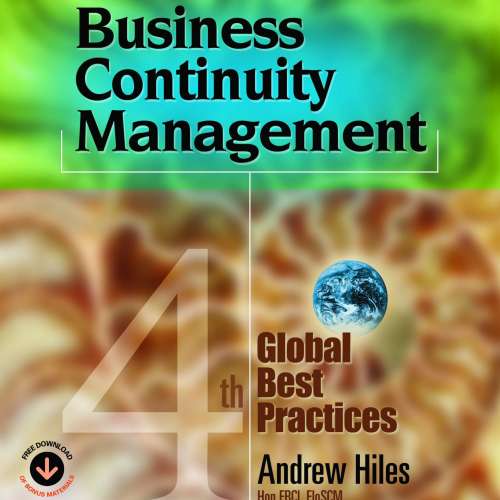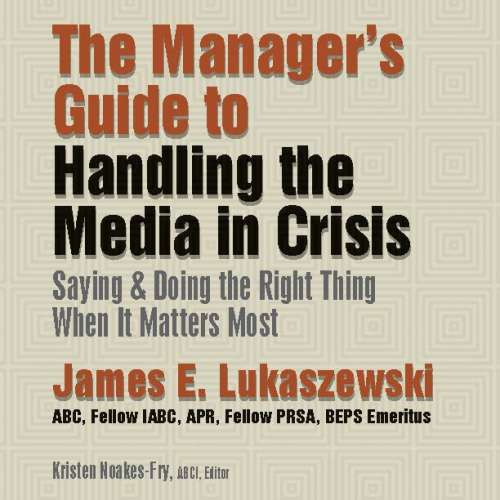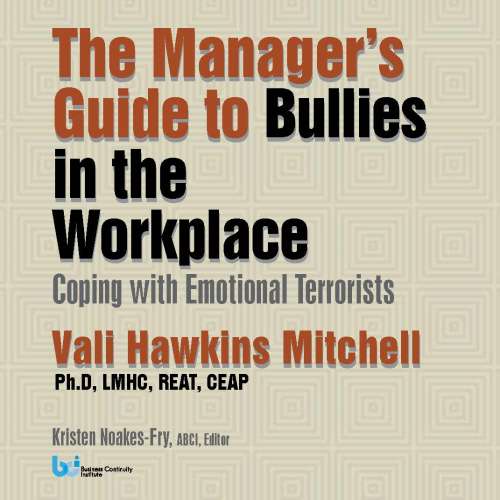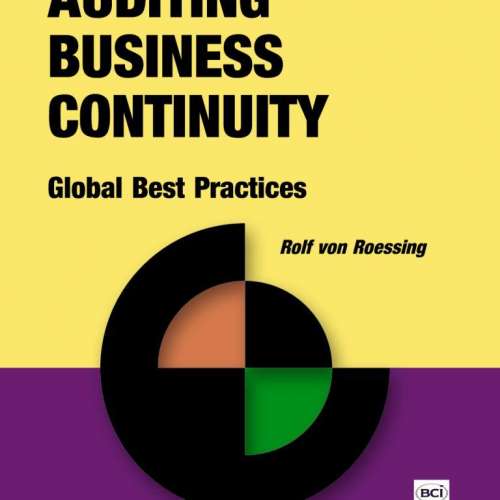Description
From over 30 years of experience working with companies like yours, Creating and Maintaining Resilient Supply Chains helps you to:
- Understand the criticality of procurement and supply chain management to the health of your organization.
- Relate the time-tested principles of good business continuity planning to constructing a reliable supply chain.
- Apply risk management principles to evaluate vendors and create effective contracts.
- Create the specifications that will result in a good tender or bid.
- Anticipate contract issues when you are dealing with other legal systems, including International Commercial Law, Anglo Saxon Law, Civil Code, Sharia Code, and European Law.
In one short book, Hiles distills the knowledge of a lifetime to prepare you to handle risks, pitfalls, and potential ambiguities. As a result, you will know how to carefully plan and negotiate supply chain relationships that benefit all the organizations involved.
Part 1: Understanding Resilient Supply Chains
While many BCPs deal with physical incidents, you may face situations in which all your physical assets remain intact – and yet you still lose your operational capability. Perhaps the most common cause of these incidents is supply chain failure.
BC Managers need to work together with their colleagues in procurement departments to ensure continuity of mission-critical supplies and services. Even when supply is maintained, price shocks could impact an organization’s competitiveness severely – or even its viability.
This chapter will help you to:
- Relate your role as a BCM to supply chain continuity.
- Appreciate the criticality of procurement and supply chain management to your organization.
- Understand the basics of procurement including the procurement cycle and associated procedures.
- See how the supply chain works.
- Know the importance of strategic procurement.
- Identify key risks – and some solutions – in procurement, supply chain, and contract management.
Part 2: Contracting for Resilient Supply Chains
Essential to the operation of the supply chain are tenders and contracts. Briefly, an invitation to tender (ITT) is a formal invitation giving suppliers the details of what the buyer needs in order to choose a supplier. For this process to take place, the buyer outlines all the specifications that will allow the supplier to offer a tender or bid on the project. Once a tender or bid has been accepted, a contract, or legally binding agreement, will follow, ensuring that the winning bidder will perform as specified. We will begin by discussing in detail the requirements of a carefully constructed tender and then, at the end of this section, address legal and content issues for an effective contract.
About the Author
About the Author
Andrew Hiles, Hon FBCI, EIoSCM, is an internationally renowned practitioner, consultant, and trainer of two generations of Business Continuity professionals. He is founding director, First Fellow, and Honorary Fellow of the Business Continuity Institute.
In 2004, he was inducted into the Business Continuity Hall of Fame by CPM Magazine for demonstrating consistent high standards over time and global reach. He has authored, edited, or contributed to 15 books and has written over 250 published articles on business continuity topics for leading international magazines.
Hiles’ dedication to training new generations of BC leaders is evidenced by his being among the first to provide truly international training in enterprise risk management, business continuity, and IT availability management in some 60 countries, as well as successfully pioneer BC training in Africa, the Middle East, China, Pakistan, and India. He has consulted globally for some 35 years, advising blue chip companies and major public sector organizations, including European Community institutions.
Credits
Kristen Noakes-Fry, ABCI, is Executive Editor at Rothstein Publishing. Previously, she was a Research Director, Information Security and Risk Group, for Gartner,Inc.; Associate Editor at Datapro (McGraw-Hill); and Associate Professor of English at Atlantic Cape College in New Jersey. She holds an M.A. from New York University and a B.A. from Russel Sage College.
Contents
Cover
Title Page
Copyright Page
Introduction
0.1 Outsourcing Issues
0.2 Getting Outsourcing Right
0.3 The Importance of Service Level Agreements
0.4 Vendor Evaluation Criteria
0.5 Relating Contract Type to Service
Fig.0-1 Fig 0-1. Contract Relationships
0.6 Lessons from Experience
Part 1: Understanding the Resilient Supply Chain
1.1 Supply Chain Dependency
1.2 Risk and the Procurement Cycle
Fig.1-1
1.2.1
The Procurement Process
Purchasing Policy
1.2.1.1 Purchasing Procedures
1.2.1.2 Using Multiple Suppliers
1.2.1.3 Using Single Suppliers
1.2.1.4 Using Best of Breed Suppliers
1.2.1.5 Other Purchasing Practices
1.2.2 Technical Authorization Policy
1.3 Strategic Purchasing and Supply Management
Fig.1-2 Figure 1-2 Risk Versus Value
1.4 Developing Sourcing Strategies: Types of Contracts
1.5 The Strategic Procurement Lifecycle
1.5.1
1.5.2
Fig. 1-3
1.5.3
Product Lifecycle
The Strategic Procurement Lifecycle
Figure 1-3 The Strategic Procurement Lifecycle
Implementing the Strategic Procurement Lifecycle
1.6 Supplier Strategies
1.7 Procurement Documentation
1.8 Tendering Procedures
1.8.1 Common Risks and Pitfalls
1.9 Outsourcing Risk
1.9.1 Getting Outsourcing Right
1.6.1 Stock
1.10 Risks: All Contracts
Fig. 1-4
1.10.1
1.10.2
Figure 1-4 OGC Gateways
The Runaway Project
The Importance of Service Level Agreements (SLAs)
1.11 How Suppliers Charge
1.11.1
1.11.2
1.11.3
1.11.4
1.11.5
1.11.6
1.11.7
1.11.8
1.11.9
1.11.10
1.11.11
Cost Plus
Time and Materials
Usage
Type of Service
Market Pricing
Fixed-Price or Lump Sum
Risk/Reward Contracts
Management Fee
Value-Based Costing
Marginal Costing
Cost of Full Capacity
1.12 Vendor Evaluation Criteria
1.12.1
1.12.2
Due Diligence
Relating Contract Type to Service
Fig. 1-5 Contract Relationships
1.13 Negotiating
1.14 Summary: Risk Based Acquisition Management(RBAM)
1.14.1
1.14.2
1.14.3
Fundamental Risk Management Requirements
Tender Risks
Contract Risks
1.15 Lessons from Experience
1.16 ANSI Standard
Action Plan
Discussion Questions
Footnotes
2.1.1
2.1.2
2.1.3
Whole Life Costing to Determine the Best Bid
Required Format for Tendering
Table of Contents for ITT
2.2 Input or Process Specifications
Table 2-1 Advantages and Disadvantages of Input Specifications
2.3 Output Specifications
Table 2-2 Advantages and Disadvantages of Output Specifications
2.4 Technical Specifications
Table 2-3 Advantages and Disadvantages of Technical Specifications
2.4.1
2.4.2
2.4.3
2.4.4
2.4.5
Functional Specifications
Performance Specifications
Technical Design Specifications
Mandatory and Desirable Technical Specifications
Technical Specifications: The Crucial Elements
2.5 Developing Technical Specifications
Checklist for the Approval of the Technical Specifications
2.5.1
2.5.2
2.5.3
Technical Requirements (Technical Specifications)
Instructions for Developing a Technical Specification
Procedure for Developing a New Technical Specification
Checklist for Confirming the Correct Development of a New Technical Specification
Part 2: Contracting for a Resilient Supply Train
2.1 The Tender
2.6 General Product/Service Specification: Checklist
2.6.1
2.6.2
2.6.3
2.6.4
General Product/Service Specifications and Objectives
Suppliers’Anticipated Requirements from Client Company
Specific to Capital Equipment
Specific to Onsite Contractors
Ten Typical Pitfalls
2.7 Typical Pitfalls of Tenders in the SME Sector: The Supplier’s Perspective
2.8 The Contract and the Law
2.8.1 Principles of International Commercial Law: UNIDROIT
2.8.2 Legal Systems: Anglo-Saxon Versus Civil Code
2.8.3 European Law
2.8.4 Sharia Law
2.8.5 International Law: Conclusions
2.8.5.1
2.8.5.2
Enforcement of Foreign Judgment
Alternative Dispute Procedures
2.9.1
2.9.2
2.9.3
Key Contract Clauses
Common Ambiguities
Important Considerations for Contracts
A.1 Key Performance Indicators
A.2 Service Level Agreements
A.3 Desk Review of Documentation
A.4 Questionnaires
A.5 Interviews
2.9 Contract Aspects
Appendix A: Critical Success Factors (CSFs) for Business Processes
About the Author
About the Publisher
Excerpt from the Introduction
In times of economic downturn, risk assessment of the supply chain – all the suppliers and resources involved in meeting customer and organizational requirements — has never been more important. High profile failures like the 2002 bankruptcy of KPNQwest and fraud-inspired 2002 collapse of Worldcom have highlighted financial weaknesses, while mergers of corporate giants like Compaq and Hewlett Packard and Oracle and Peoplesoft have challenged their customers’ carefully thought out strategic directions. Wide area disasters such the 2005 Buncefield Oil Terminal explosion and fire; the Christchurch, New Zealand, earthquakes; the Japanese tsunami; and widespread floods in the US and elsewhere disrupted distribution networks. The 2010 Deepwater Horizon oil spill in the Gulf of Mexico on the BP-operated Macondo Prospect has also shown the difficulties in trying to transfer risk to suppliers. And a recent survey from the Aberdeen Group showed over half of its respondents had suffered supply chain failure:
- 56% said supplier capacity did not meet customer demand.
49% suffered raw materials price increases or shortages.
45% experienced unexpected changes in customer demand.
39% experienced shipment delays/damage/misdirects.
35% Suffered fuel price increase/shortage.
Another survey conducted by Genysis/Ovum/Datamonitor found that 25% of customers changed utility vendors for poor customer service, costing each industry £2.6 bn.
Increasingly, procurement functions are consolidating contracts into a few, large contracts involving fewer, strategic, suppliers and closer electronic links. Moreover, the trend to outsourcing is still gathering momentum. The two trends mean that an enterprise has considerable dependence on its suppliers, with consequent supply-side risk. Moreover, supply chains may be long and opaque – for instance, up to 30 different companies could be involved in providing an internet based service.
For convenience, the following text refers to outsourcing; however, most points apply equally to other types of service and supply contracts. One word of caution: beware “partnerships.” Legally, a partnership involves sharing risks, profits and losses jointly and severally: this is not what most vendors mean when they refer to a partnership.
The words of one senior manager make the point: “Whenever I hear the word ‘partnership’ I know I am going to be shafted!” If it is genuinely a joint venture, breaking new ground, then sharing risk and reward may be appropriate. Even then, however, each party may have (or develop) different motives and objectives with consequent breakdown of the relationship.
Studies by Birkbeck College of University of London and Bank of International Settlement (BIS) indicate that over half of outsourcing contracts suffer serious dispute between supplier and customer, and 70% of IT outsourcing users hit problems. Half of the disputes are resolved by changing vendors, while 22% are terminated by customers bringing the service back in house.
Excerpt from Part 1: Understanding The Resilient Supply Chain
In business, you don’t get what you deserve. You get what you sign for in the contract. Wars have been won and lost by the effectiveness of the combatants’ logistics – companies live or die depending on the performance of their supply chains. – Unknown
1.2.1.4 Using Best of Breed Suppliers
An approach that has become fashionable in recent years is best of breed purchasing. This is akin to, but not the same as, market leader purchasing (see the discussion of other purchasing approaches below). Best of breed purchasing is based on finding and buying the best product and/or locating the best supplier in each area. Many problems emerge in best of breed purchasing, not the least of which is defining the boundaries of departmental areas.
Best of breed purchasing implies a:
- Clearly defined product or service required.
- Need that can be met by one supplier.
- Sufficient number of suppliers from which to choose.
- Clear definition of what constitutes best of breed.
Each of these points is important. In order to apply best of breed purchasing, it is first necessary to break down each buying decision into homogenous components which allow valid comparisons to be made. Best of breed also assumes that (at least in essence) one supplier can meet this need and that there are several such suppliers; otherwise, the term best of breed would be meaningless. Finally, it is necessary to define best of breed, though this is not always obvious or uncontroversial.
The advantages of best of breed purchasing are:
- It simplifies purchasing decisions. Purchasing decisions are simplified because one is simply looking for the best product and this dominates other considerations that might normally loom large in such decisions (such as price or strength of local support). Organizations often buy products that they recognize as not being the best because of local or other considerations that compensate for this shortcoming.
- It reduces risk. Best of breed suppliers are generally well established and usually widely recognized. If so, many other organizations are using the product, presumably several of those will have evaluated the product and found it good. If the product were not good, then it would not be so widely used.
- Where competitive advantage matters, it can give a competitive edge.
- There may be intangible benefits. By working with a good supplier, some of its ethos may “rub off”on the purchaser’s own staff. Good consultants especially can have an invigorating impact on an organization (provided that they do not take over entirely).
The Business Continuity Manager needs to be aware of the risks and disadvantages of best of breed purchasing. These are:
- It is not always feasible. For example, the ideal combination of products simply may not mix. This problem also arises with multiple supplier purchasing but it is more acute with best of breed because the latter is driven by having the best in each product class rather than just having an alternative supplier. The best in each class may not always work together.
- It can lead to integration and compatibility problems. Although market leading products and suppliers tend to work better together, compatibility problems can still arise.
- When there are problems, it can lead to disputes over responsibility. This should not happen with best of breed suppliers; one expects them to behave in a businesslike and professional manner. However, it is still possible for two suppliers genuinely to believe that the other is at fault.
- Few suppliers remain best of breed over a long period. A look at any industry over the past 30 years will reveal many names of former industry leaders who have dropped down the list of leading suppliers or have even gone out of business. The question of what to do when a supplier’s product is surpassed by another product needs to be addressed.
- It can be expensive and may be poor value. Buying best of breed often means paying premium prices. This is acceptable provided one is obtaining commensurate value. Adequate alternative solutions are often available at far less cost.
The Business Continuity Manager should be aware of the dangers of buying new products, especially new technologies, even from market leaders.
If there is a reason for needing the best, in particular if competitive reasons are driving the decision or it is clear that, in terms of value for money, the best product on offer is the best value on offer, then best of breed is a good policy. Best of breed can also be applied effectively for isolated requirements.

